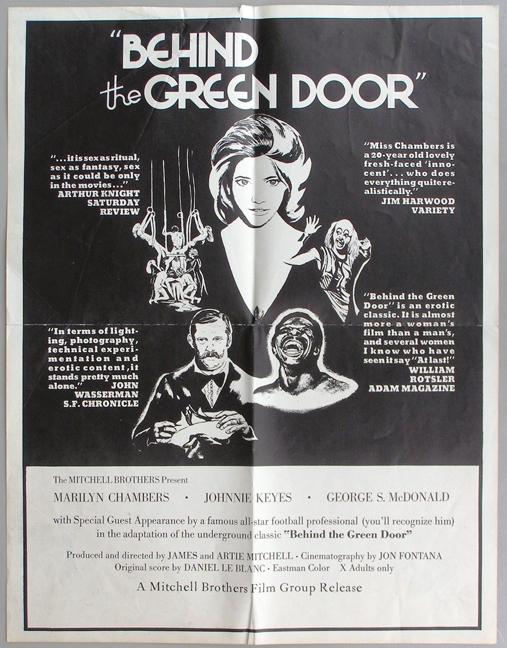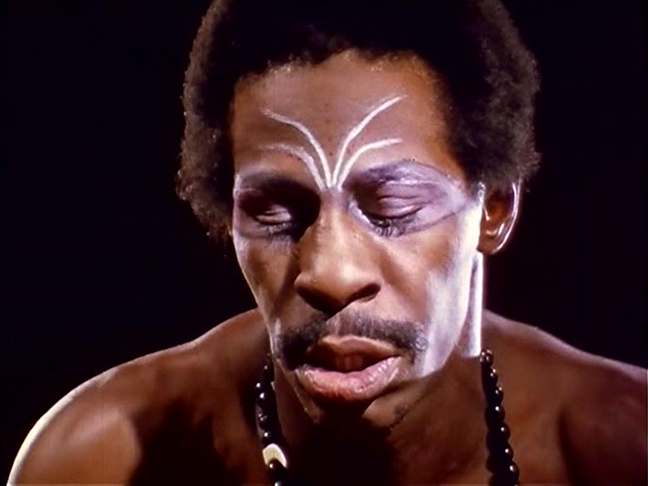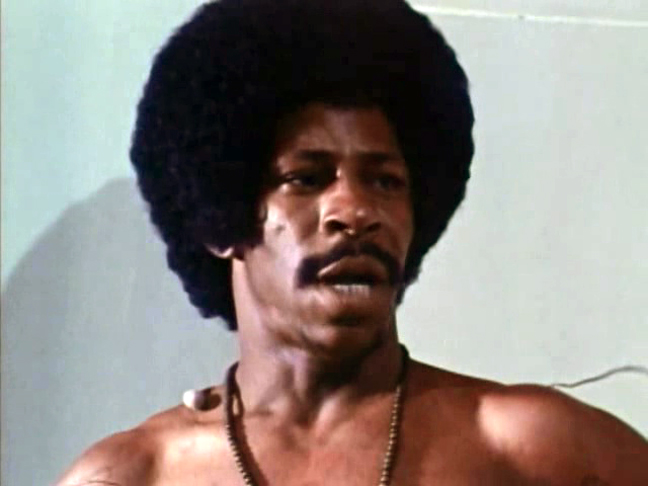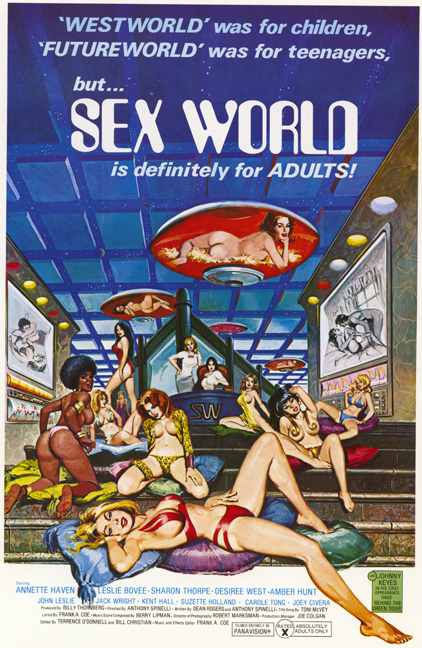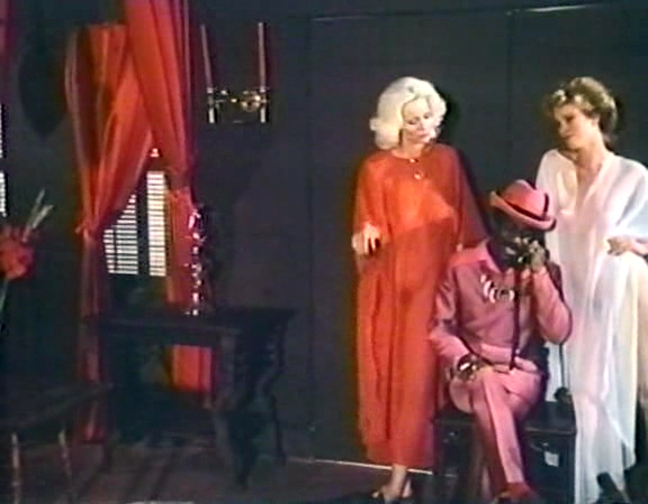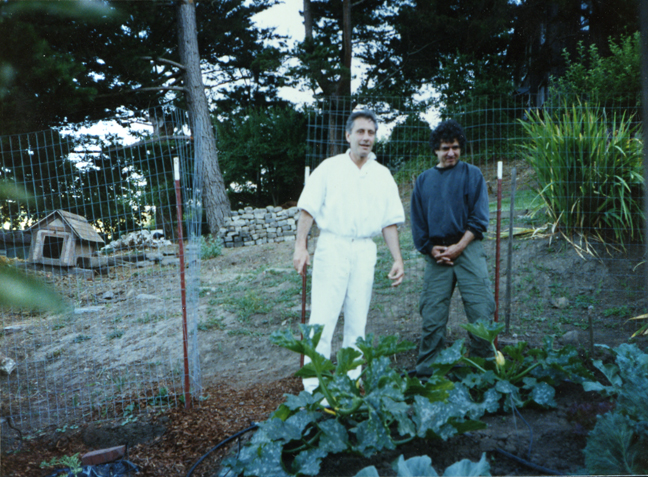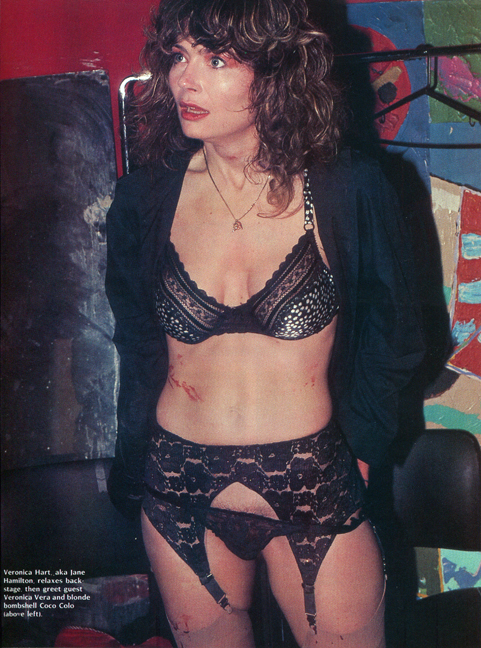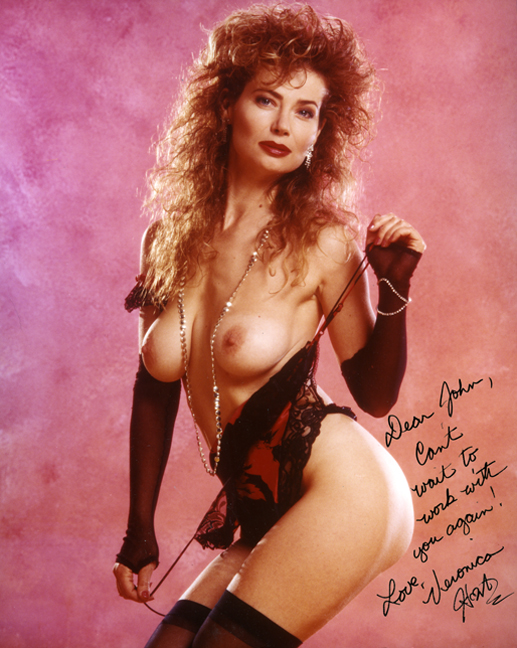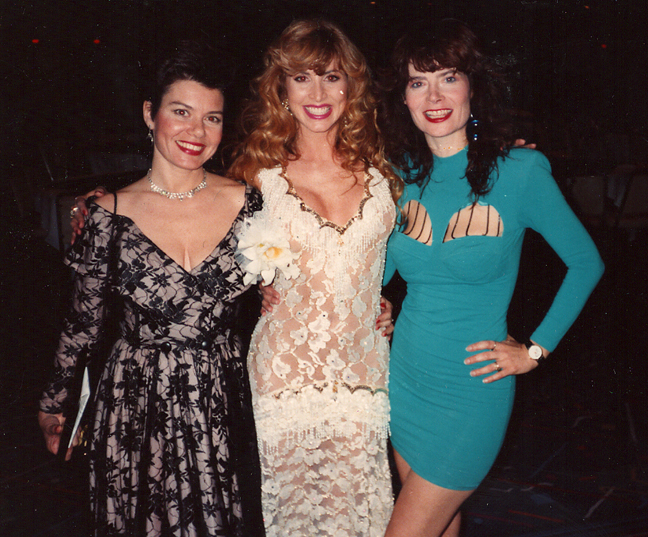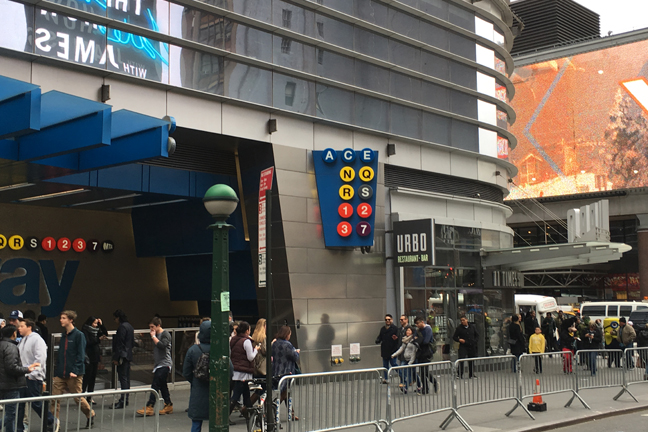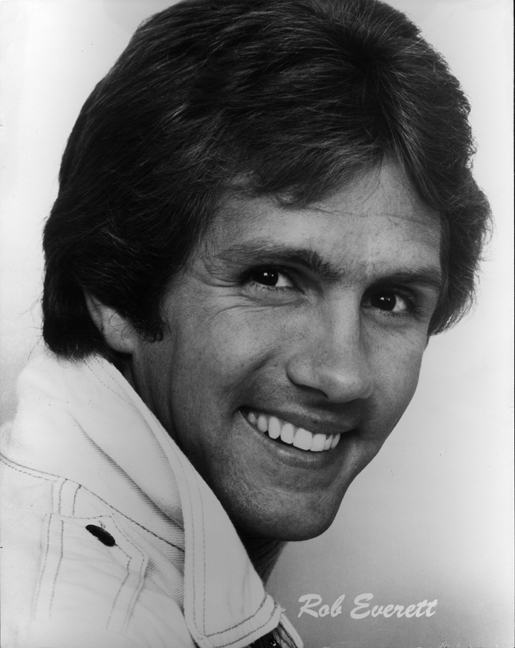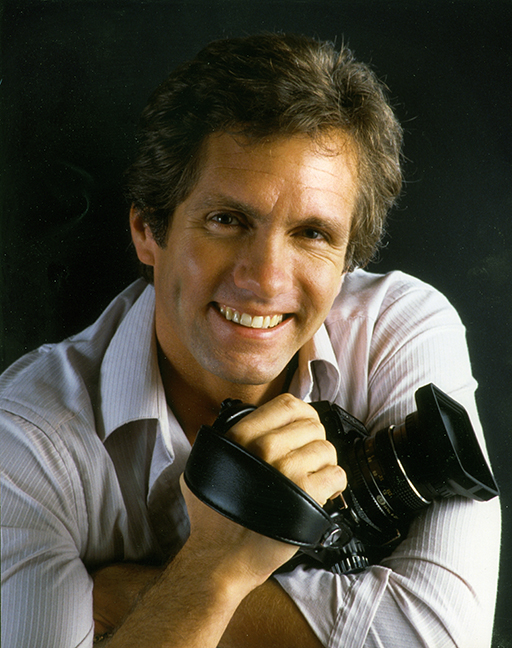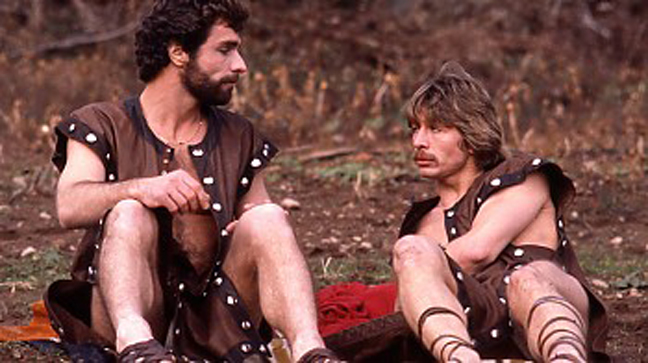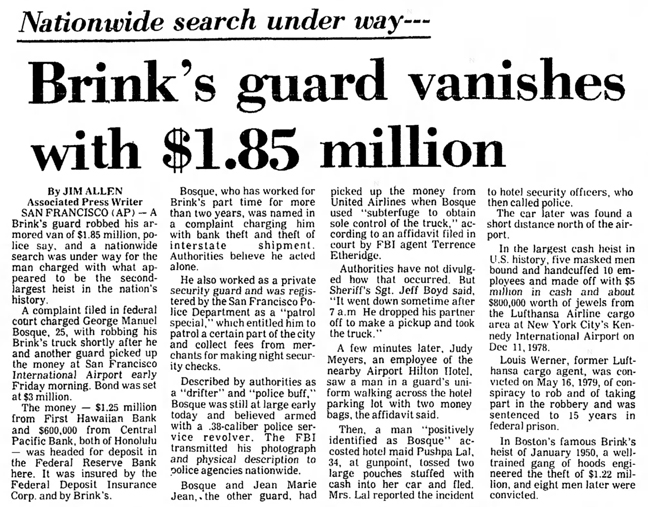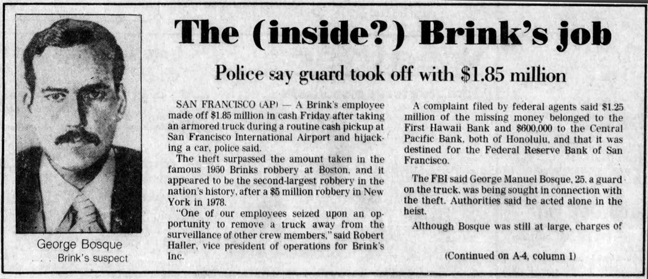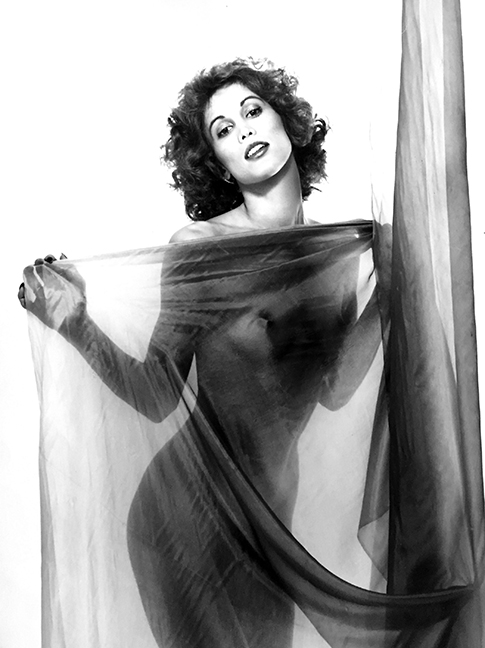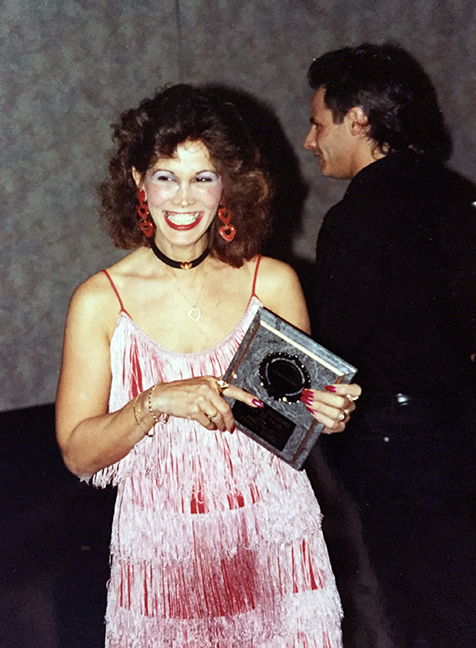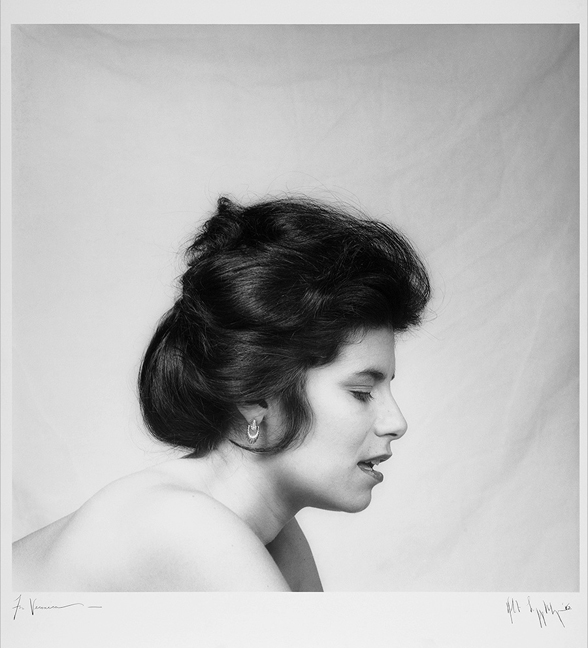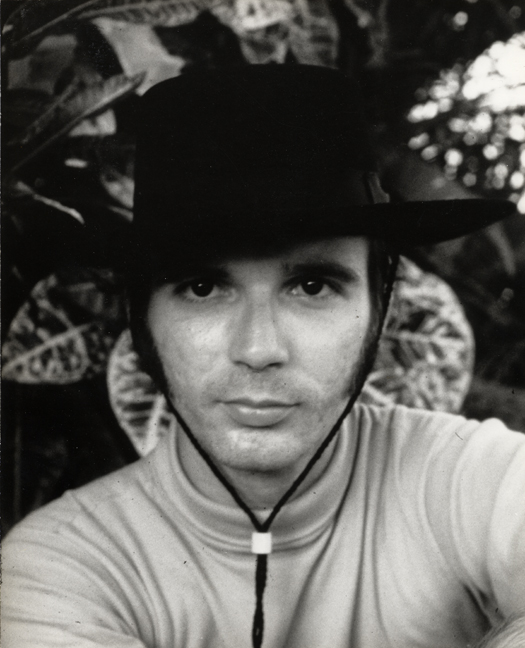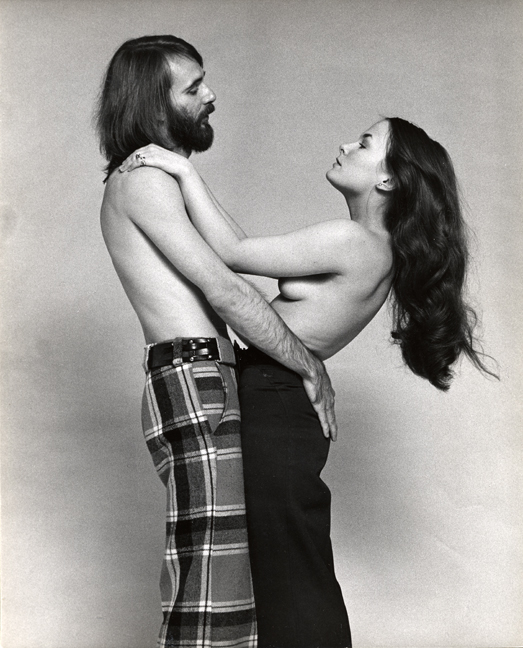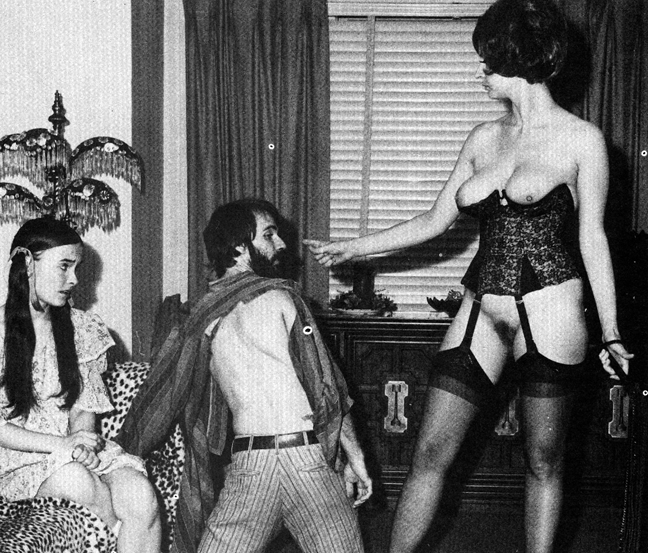The story behind the making of Centurians of Rome has been the subject of much speculation since the movie was first released in 1981.
– It was supposedly the most expensive gay porn film up to that point
– It was allegedly funded using the proceeds of a robbery
– It was claimed to be owned by the prestigious Lloyd’s of London insurance company
But what is the real story?
Over the last year, The Rialto Report has tracked down and interviewed over 30 people to find out the truth – from those connected to the making of the film, FBI, police and lawyers, as well as friends and family of the protagonists.
In this installment of The Rialto Report, the full story behind the film is finally told. It is the story of three men; a producer, a director, and an actor, and how their lives connected briefly in 1980/81 to make one of the golden age’s most notorious films.
With sincere thanks to all those who contributed their memories to this article.
_______________________________________________________________________________________________
1981: Nyack, NY
It’s fall in a muddy field 35 miles north of New York City, but it feels more like the middle of winter. Especially to the men standing around shivering in short Roman togas and sandals.
They’ve been up since 6am for an unfeasible activity. They’re filming scenes for an unnamed, gay, pornographic film set in ancient Rome that will feature a crowd of first-time actors culled from a variety of Manhattan bath houses and sex clubs. And it’s freezing cold.
Is it any surprise that nerves are frayed?
![Centurians of Rome, Scorpio]()
At the heart of the confusion, an intense discussion is taking place among three men.
There’s the film’s director, Chris Covino. Christopher John Covino to his family. Or John Christopher to the adult film world.
Then there’s Wilbur Weiss Jr., one of the film’s lead actors, a Jersey pretty boy, ex-male stripper, who understandably prefers to be referred to as ‘Scorpio’.
And there’s George, the film’s financier.
George doesn’t have a second name. At least no one knows what it is. Or where he comes from. Not even Chris Covino, who brought George on board. Normally that would be a red flag, but when a money-man has handed you a suitcase of cash to make a movie, and drives you to the film set each day in a stretch limo, do you need to ask any questions?
This is the fourth day of shooting and there is still no end in sight. Chris is an experienced director. He knows that plans are useless, but planning is indispensable. He sent out shooting scripts for this film weeks ago but now that they’re on set, the Cecil B. DeMille-wannabe George has different ideas and throws out new suggestions every few minutes.
This bugs Scorpio. He’s learned all his lines in advance, and hates the number of changes he has to deal with. Chris agrees with him, but is trying to be the diplomat, reluctant to jeopardize his film’s substantial funding.
To help resolve their differences, George invites Scorpio into his limo for a talk.
On the back seat is a large bag containing 10 pounds of blow.
*
August 15, 1980: San Francisco, CA
Just six months before the events in the Nyack field, George was a different man.
For a start he had a second name; he was George Bosque. He was living in a small apartment at 116 Tallwood Drive in Daly City, ten miles south of San Francisco.
And he had no money.
![Centurians of Rome]() He’d been working part time for the Brinks security and protection company for almost three years, earning $7 an hour, and life had gone to seed. He had problems whichever way he looked – his partner, his family, his health, his career, his politics, his finances. Life wasn’t meant to turn out this way.
He’d been working part time for the Brinks security and protection company for almost three years, earning $7 an hour, and life had gone to seed. He had problems whichever way he looked – his partner, his family, his health, his career, his politics, his finances. Life wasn’t meant to turn out this way.
Love was the uppermost problem in his mind. Well, love and money. Or the lack of both. And what made it worse was that he was surrounded by the huge sums of cash that he had to guard. He fantasized about grabbing some of it one day and escaping to a new life where he could fulfill his dreams. Sometimes when he thought of stealing the cash, he was reminded of his favorite line from his favorite film: “You’ve gotta ask yourself one question: “Do I feel lucky?”
On the morning of August 15, 1980, he sat in his security truck staring at several bags of money that contained over $7 million. He asked himself the same question again: “Do I feel lucky?”
Yes, he thought. Today is different. Today I feel lucky.
So he took as much money as he could carry, and he disappeared into thin air.
*
Early 1970s: Miami, FL
George Manuel Bosque was born in January 1955 in Miami, Florida, the son of a Cuban immigrant, Jorge Bosque, who came to the United States early in the 1950s.
It was a close-knit family dominated by George’s father’s and his austere and exacting standards. George attended a private Catholic elementary school and then the Miami Military Academy, a military-style boarding school aimed at well-to-do families in the South Florida area, whose slogan was ‘Boys Today, Men Tomorrow.’
![Miami Military Academy]() George was a young man in a hurry; he was a class vice president, a member of the debating club, played for the chess team, and excelled as a track star. He was the editor-in-chief of ‘The Eagle Beak’, the academy’s newspaper, and was even listed in the annual volume of ‘Who’s Who Among American High School Students’.
George was a young man in a hurry; he was a class vice president, a member of the debating club, played for the chess team, and excelled as a track star. He was the editor-in-chief of ‘The Eagle Beak’, the academy’s newspaper, and was even listed in the annual volume of ‘Who’s Who Among American High School Students’.
Schoolmate Albert Poledri remembered him as “the smartest guy I ever met in school.”
George let others know that he was doing well. “Yes, he was one of a kind,” said Lester Severns, one of George’s teachers at the military academy. “But he knew it too. He thought he was much smarter than everyone else.”
But in the post-Vietnam, counter-cultural, free-love era, he cut an unlikely pro-establishment figure. At a time when teenagers were reacting against the rigid, entrenched post-war attitudes of their parents, George was rebelling against the rebellious, hitting out against hippies, and protesting the student protesters.
He became obsessed with law and order. It started innocuously. He participated in Junior Reserve Officers’ Training Corps (ROTC) and the Miami police department’s Explorer Scout program. He loved ‘Dirty Harry’ and vowed to join the army or the police when he graduated.
“At the time, he was very interested in the military,” says Stephanie Guinness, who had George in one of her journalism classes at the academy. “He always said he wanted to become a general.”
“He was always dressing up very sharp,” adds Raoul Fuertes, the academy’s guidance counselor, “ and he loved playing the military type.”
His father encouraged George’s military aspirations, boasting to friends that his son had become a real man, “tough, disciplined, patriotic and proud”. And George would do anything to make his father proud.
![George Bosque]() George Bosque, graduate of the Miami Military Academy
George Bosque, graduate of the Miami Military Academy
Others found George more difficult. Lester Severns remembered, “He was the type who could get in an argument in a locked closet – alone.”
Raul Fuertes, then director of guidance for the academy, was also uneasy. “He was very bright, but he was a shrewd person. Personally I was always a little bit scared of him. I didn’t trust him at all.”
George started speaking out more forcefully. In 1973, he wrote in The Eagle Beak: “I am sick of Supreme Court decisions which turn criminals loose on society… while other decisions try to take the means of protecting our homes away. I am sick of being told policemen are mad dogs who should not have guns… but that criminals who use guns to rob, maim and murder should be understood and helped back into society.”
He lashed out at the unpatriotic, the “deserters and traitors.” He wrote that he’d had it with “termites” telling Americans they had a sick society and was “sick of seeing our parents paying more and more taxes to build schools while some faculty members are encouraging students to tear them down.”
![San Francisco Patrol Special Polic]() Not that he was immune from getting into trouble with the law. He ‘borrowed’ a car belonging to his high school teacher and drove it out of state for a lark. He was soon caught and arrested, but the teacher didn’t press charges and the case was dropped.
Not that he was immune from getting into trouble with the law. He ‘borrowed’ a car belonging to his high school teacher and drove it out of state for a lark. He was soon caught and arrested, but the teacher didn’t press charges and the case was dropped.
Most put his extremist views and wild ways down to youthful exuberance, and when he graduated in 1973 he was described in his high school yearbook as “an all-American overachiever”.
He wrote: “Life is a simple contest, in which not the strong and loudest win, but the silent, watchful strategist and calculist.”
In one of his last editorials he railed against one of favorite targets: homosexuals. He was sick of “not being able to take my girlfriend to a movie unless I want her exposed to nudity, homosexuality and the glorification of narcotics. I am sick of the decline in personal honesty, personal integrity and human sincerity. Take note, you in high places…”
It was a bizarre tirade. There were no girlfriends and movie dates in George’s life. He was gay.
*
1973 – 1976: Washington, DC
When George graduated, he was confident, cocky even. Whatever conflict he felt about being gay, he had the world at his feet and spoke about a life of public service and standing for political office. He decided to start out in the police force, and was recommended to Miami Dade County’s police department as “a young man of sterling character”.
He had a rude awakening.
After attending the Miami police academy, he was passed over for service. So he went to college at The Citadel military academy in Charleston, SC hoping to be admitted to West Point. He failed there too.
The reasons for George’s failure are not known, but his father blamed racism for George’s lack of progress, complaining that it was because “he lacked any influence from any senators.”
In August 1975 George moved to Washington D.C. and was hired as a police dispatcher at George Washington University. It wasn’t the glittering career move he had in mind, and soon cracks started to appear in his disciplined facade. He was arrested on a larceny charge of stealing police walkie-talkies. But once again he was released without charge.
On the bright side, he finally had a social life. He loosened up, stopped hiding his sexuality, and showed up on the bar scene in Washington’s Georgetown neighborhood. It was there he met the love of his life.
George met Carl Denton in 1975 and it was love at first sight for George. Or whatever a former anti-gay crusader feels when he realizes he’s in love with a man.
Carl was jailbait – he was 17; George was 21 – a slight, blue-eyed kid with a crew cut. He’d spent some time in juvenile homes and was a habitual runaway. The two hit it off and before long they moved in together, living in a small apartment on Capital Hill.
Their relationship was a doubled-edged sword; George was devoted to Carl, but he lived in abject fear of his father ever finding out and the rejection he would face.
To make matter worse, he’d also started experiencing epileptic seizures. The seizures were scary. They’d come on without warning and sometimes leave George unconscious. First his back would arch, next his chest would contract, and then his limbs would shake. Sometimes he turned blue as his breathing became labored. It could take up to half an hour to return to normal again.
George hated being epileptic. He could deal with the seizures, but he feared that they signaled the end to any possible career in law enforcement. There was little chance he’d pass a medical. And even if he did pass, his first seizure on the job would mark his immediate termination.
George and Carl wanted a fresh start. George sent a letter to his father saying he was moving to San Francisco. “I want to make you proud of me again”, he wrote. “I’m going there to seek my fortune.”
Within four years he would have a bigger fortune than anyone dreamed possible.
*
1976 – 1980: San Francisco, CA
When George arrived in San Francisco, he immediately applied to the police force. He lied on the application form about his epilepsy. It didn’t matter though; he was rejected anyway.
He settled for a job as an animal control officer for the San Francisco Society for the Prevention of Cruelty to Animals (SF-PCA). Colleagues there remember him as a pleasant and gregarious person, though he had some strange interests. Thomas Edwards, a co-worker at the SF-PCA described him as a “self proclaimed Nazi who had his apartment bedecked with Nazi regalia”. Edwards stopped seeing him socially because of this. Edwards also remembers George complaining about financial difficulties and trying to borrow money from people.
Peggy Phillips, another co-worker, remembers the Nazi flags and regalia as well, but said it was just something he fooled around with. “He was fun to be around. He was friendly and pretty popular.”
The SF-PCA job didn’t last long; in 1977 the general manager, Richard Avanzino, fired him for reasons never fully disclosed.
George headed back to the police force recruitment center, and finally got a job with them. Well, almost. He became a full-time San Francisco special police officer.
![San Francisco Patrol Special Polic]() The San Francisco Patrol Special Police is a neighborhood police force authorized in San Francisco’s City Charter but not actually part of the San Francisco Police Department. Rather they are unsworn officers, private citizens, appointed and regulated by the San Francisco Police Commission after an initial security review by the San Francisco Police Department. They purchase a specific area of the city, and charge private clients hourly rates for a variety of neighborhood protection services.
The San Francisco Patrol Special Police is a neighborhood police force authorized in San Francisco’s City Charter but not actually part of the San Francisco Police Department. Rather they are unsworn officers, private citizens, appointed and regulated by the San Francisco Police Commission after an initial security review by the San Francisco Police Department. They purchase a specific area of the city, and charge private clients hourly rates for a variety of neighborhood protection services.
George had a friend, Lou Vance, who bought a district to patrol and offered half of it to George for a small fee. For a time George was happy. He could pretend that this was the life he’d been waiting for. He had the works – a gun, a badge, even a uniform. His youthful confidence came back, and he threw his weight around, sometimes too much. One day, he pulled a gun on an acquaintance’s girlfriend and handcuffed her just because he could. Not surprisingly he was fired from the job, but he re-applied and was re-hired within weeks.
The special policeman position was largely a nighttime job leaving George free to look for other daytime security work. In January 1978 he applied for a job at Brink’s. The Brink’s selection process was more rigorous than the special police force. George underwent lie detector, fingerprint and background checks. He had multiple forms to complete and three rounds of interviews. But then much to his surprise he was offered a job as a security officer. Undetected were his two arrests, his epilepsy, or pulling a gun on a friend.
George’s job at Brink’s generally consisted of being part of an armed five-man team that moved cash from one San Francisco bank to another in an armored car. He completed the training and was on the street within weeks.
![Centurians of Rome]() With the two security jobs, George should have been happy. But he wasn’t. In fact he was depressed. His home life was falling apart, as he fought frequently with Carl. Often the fights were about money; sometimes they were just because George was afraid.
With the two security jobs, George should have been happy. But he wasn’t. In fact he was depressed. His home life was falling apart, as he fought frequently with Carl. Often the fights were about money; sometimes they were just because George was afraid.
A neighbor remembers him suffering two bad epileptic seizures and George fearing he would lose both jobs as a reult. “It had something to do with his not being able to drive or carry a gun if he was known to have epilepsy. He knew his job was on the line”, said the neighbor.
Another friend, Greg Jones, remembers George telling him that time was running out – “He wanted money for proper epilepsy care. There was no way he could afford treatment with his security jobs.”
Some people would turn to their family for help at this stage. Not George. A friend commented that he would rather die than have his father learn of his gay lifestyle.
By 1979, George was desperate. He decided to run for sheriff of San Francisco. So what if he had been rejected by the police force in three states? He figured he had something to offer, some new ideas, and God knew he could use the money.
His statement read, “A vote for me is a vote for safer jails, better jails, a sheriff’s cadet program, support for human rights, a 25% cut in the sheriff’s salary, and many other beneficial and innovative changes.”
It was an optimistic bid, but despite some aggressive lobbying, he wasn’t even able to get on the ballot.
George was knocked back by the latest failure. He felt he was running out of opportunities.
And then came the last straw. On the evening of August 14, 1980, Carl announced that he was moving out of their apartment in Daly City. Carl had already packed his bags, and told George he would leave the following morning.
Neighbors still remember Carl dragging his luggage to the nearby intersection and waiting for a bus to leave town.
*
August 15, 1980: San Francisco, CA
At 7am on a foggy summer morning, George and a Brink’s driver, Jean Marie Jean, arrived at San Francisco International Airport in an armored truck.
They were there to pick up a money shipment from Honolulu, which they had to take to the Federal Reserve Bank in downtown San Francisco. The shipment consisted of seven large, gray, canvas sacks of money in $50 and $100 bills. It totaled over $7million.
After loading the sacks into the truck, George told the driver that an airline official inside the terminal wanted to speak with him. It was a lie.
With the driver gone, George drove the truck to the nearby San Francisco airport Hilton, where he abandoned the vehicle.
As he was getting out of the truck to unload the money, George noticed a hotel chambermaid, Pushpa Lal, parking her car as she arrived for work.
George accosted her at gunpoint, and transferred two of the seven sacks stuffed with $50 and $100 bills into her car. Then he took her car keys and drove off.
Lal claimed George wanted to take her with him, but she jumped out of the moving vehicle before it sped away.
Her abandoned car was later discovered a few miles away in Daly City, where George and Carl had their apartment.
It was found with a note and a $50 bill attached.
The note read:
Dear Lady.
Sorry I had to use your car and that you were so scared.
Yours,
A Man in Trouble.
And with that, George disappeared.
![Centurians of Rome]()
*
August 1980 – November 1981: The Search for George Bosque
When the dust settled, the cops calculated that George had made off with bank bills totaling $1.85million.
The victims were Honolulu’s First Hawaiian and Central Pacific banks, though checks covering the losses were swiftly sent out by Brink’s and covered by the insurers, Lloyds of London.
It was one of the largest hauls ever stolen from Brink’s, but worse than the financial loss was the corporate shame and embarrassment. The company was the world’s largest security transportation company. It claimed to have the highest standards. Your money was supposed to be secure with Brinks. But now it had been humiliated by an epileptic, failed security guard.
![Centurians of Rome]()
Word of the robbery splashed across newspapers all over the world. The irony was that it was an open and shut case. The cops knew who did it, and how he did it. They just had no idea where he was.
“We want him found,” fumed Edward S. Lenehan, vice president of Brink’s. “We want to set an example for the other employees.” The theft angered the firm so much that a $50,000 reward was offered for information leading to capture of the thief. Lloyd’s of London, equally angered by the robbery, added more funds until the reward totaled $150,000.
A huge nationwide manhunt was launched. Wanted notices were sent out far and wide: the FBI transmitted George’s photograph and physical description to police agencies around the country. George was described as “26 years old, 6’ tall, 180 pounds, slender, and has worn a mustache. He is of Cuban descent, and is fluent in Spanish. He has suffered from epilepsy. He is a deeply troubled man, a Nazi buff and a drifter.”
Soon agents issued statements saying that George was “know to associate with homosexuals.” They combed the Castro district of San Francisco armed with pictures of George, and widened their search to look for Carl – described as “a roommate and alleged lover of the fugitive.”
![Centurians of Rome]()
Five days later, agents learned that Carl had flown to Dallas. He turned himself into police there. He’d just split up with George, he told them, and knew nothing of the robbery. Carl’s mother agreed with her son: “It was nothing to do with him. George is a leader, and Carl is a follower. Carl has sense enough to know right from wrong.” The police agreed, and Carl was ruled out as an accomplice or a suspect.
At first the police were optimistic. It would surely only be a matter of days before George was found. Edward S. Lenehan of Brink’s stated that the FBI “is pursuing this so vigorously and putting on so much pressure that eventually they will get positive results”.
But in truth no one had a clue where George was.
And then George got in touch with the outside world.
First he sent an envelope with $10,000 in $50 bills to the San Francisco Society for the Prevention of Cruelty to Animals where he had once worked. He included a note to Richard Avanzino, the director who had dismissed him three years earlier.
The note said:
Dear Mr. Avanzino.
You are a good and honest man.
Please use this humble amount to benefit our animals.
God bless you.
Mr. Anonymous.
The press descended on the SF-PCA offices. Avanzino confirmed that he’d fired George several years earlier but wouldn’t say why to the media. Avanzino just said, “I appreciate his intent with this donation, but I wish it had come under different circumstances.”
![Centurians of Rome]()
Then George sent $20,000 to his former partner, special police officer Lou Vance.
This time the note read:
Here’s the money I owe you for your beat and the equipment.
I hope your children will remember me for my good points, and I hope you use the money wisely for that mobile home that you wanted.
Don’t forget: It’s a chance that makes brothers, but the heart that makes friends.
Vance handed the money over to the authorities.
![Centurians of Rome]()
In September 1980, George was charged in absentia. A federal grand jury indicted him with larceny of bank funds and theft from an interstate shipment. The two counts carried a maximum sentence of 35 years in prison and a $15,000 fine.
Suddenly sightings of George were reported all over the country and investigators were dispatched in every direction, from New York to Chicago to Los Angeles to Miami and Dallas. At one point FBI agents were sent to Peru to search for George in a colony of 1,000 Cuban expatriates.
It wasn’t long before interview requests poured into the Miami home of Jorge Bosque, George’s father.
![Centurians of Rome]() “As far as I know, he has never been out of the U.S. except for the times I took him to Cuba when he was a baby. I would be surprised if he’s in Peru but, on second thought, I wouldn’t. Nothing surprises me anymore. I never thought George was capable of doing something like this in the first place”.
“As far as I know, he has never been out of the U.S. except for the times I took him to Cuba when he was a baby. I would be surprised if he’s in Peru but, on second thought, I wouldn’t. Nothing surprises me anymore. I never thought George was capable of doing something like this in the first place”.
Asked if it was true that his son was gay, Jorge reacted angrily: “No, absolutely not. I’m sure he has girlfriends. He has mentioned several to me. A father never asked for a better son than George. I think possibly he may have been induced by someone else to do this terrible thing, if indeed he did do it”.
Jorge added: “Ever since I learned about this, I can’t sleep well. I am afraid for my son. Someone could kill him.”
As the weeks turned to months after the theft, there were no leads or clues about George.
“There’s just no telling where he is,” said William Nettles, assistant special agent in charge of the Miami FBI office. “We’ve been pretty much depending on people letting us know if and when he does come in or if they hear from him.”
On the one year anniversary of George being on the run, Bill Duff, an FBI spokesman, was even more forthright. When asked where George might be, Duff said, “To be honest, we have absolutely no idea.”
So what happened to George Bosque, and where did he go?
![Centurians of Rome]()
![George Bosque]()
*
August 1980 – November 1981: On the Run
Details of George Bosque’s movements have been largely unknown since he disappeared from the San Francisco airport Hilton. For the next 15 months he contacted few if any of his old friends, and certainly didn’t dare to speak with his family. However with the assistance of people he met on the lam and information from police officers that tried to track him down, for the first time we’re now able to piece together some of his movements.
The first place George headed to was New York. He hadn’t been there before and figured it was a big city where he could blend in and no one would recognize him. He took on an assumed identity; he became millionaire businessman and philanthropist, ‘J. R. Lewis’. He made contact with people who supplied him with phony documents. He became friends with a gay crowd on the Manhattan bar scene and was invited to Fire Island where he ended up couch surfing for the remainder of the summer.
At first, caution reigned supreme. He kept his money in a series of suitcases that he took everywhere and never let out of sight. He became paranoid about staying in the same place for fear that he would be easier to find, so in September he set off again, this time turning up in Chicago. He realized quickly just how much his money impressed people, and suddenly he was popular, in demand, and well-liked. He became friends with a police lieutenant who acted as his personal chauffeur around town. A politician threw a party in his honor. He was invited to fundraisers, balls, and the extravagant soirees of the wealthy.
From Chicago, he went to Denver, Dallas, Florida, and then Peru. George’s confidence grew. He checked into penthouse suites in five star hotels, bought fancy clothes, and rented expensive limos with uniformed chauffeurs. He organized lavish parties and developed a designer drug habit.
And he was generous too. Along the way George doled out money to people he met. $20,000 to a new friend who wanted to open a fitness center. $10,000 to someone who needed money for a sick relative. $5,000 to a person he met who wanted to fly to Europe to see their relatives.
All cash gifts. Money down. No questions asked. On average George was spending $4,000 each day.
He once got into a disagreement with a store that claimed he hadn’t settled his account. He filed court papers – all using the fake name ‘J. R. Lewis.’
Living in hotels and settling the bills in cash could raise suspicions though. At the end of 1980, he decided he needed a permanent base. He determined that New York was the best place for him to live, so he took out a $1,160-a-month lease on an apartment in Greenwich Village and spent $60,000 on furnishing and decorating it in opulent Art Deco style.
Once in New York, George’s spending showed no sign of slowing down. He took regular helicopter trips, dined at the Waldorf on beluga caviar and champagne, and showed up at a $500 per plate fundraiser for Jimmy Carter who was engaged in a presidential election fight with Ronald Reagan.
George liked to mix with the high-class crowd but was also wild-eyed when it came to the seamier side of New York. He discovered the Times Square theaters, the gay bar scene and was a regular visitor to the bathhouses.
And one night he befriended an adult film director, Chris Covino, aka John Christopher.
*
Chris Covino’s story
Born in September 1953, Chris Covino was 27 when he met George Bosque, but already a veteran of the New York pornographic film scene.
![Chris Covino]() The eldest of three brothers, Chris was raised in a straight-laced and traditional New Jersey family. After graduating from high school he attended the local Montclair State University, 20 miles west of New York City, where he was active in the theater group and photography clubs. He loved developing short scripts that he and others performed as sketches on campus. They were light and zany affairs, combining slapstick with satirical observations of society. One friend remembers them as being a cross between Monty Python and the Three Stooges. Fellow students from the time remember Chris as being friendly, energetic and creative. He was also gay, a fact that he steadfastly kept from his family.
The eldest of three brothers, Chris was raised in a straight-laced and traditional New Jersey family. After graduating from high school he attended the local Montclair State University, 20 miles west of New York City, where he was active in the theater group and photography clubs. He loved developing short scripts that he and others performed as sketches on campus. They were light and zany affairs, combining slapstick with satirical observations of society. One friend remembers them as being a cross between Monty Python and the Three Stooges. Fellow students from the time remember Chris as being friendly, energetic and creative. He was also gay, a fact that he steadfastly kept from his family.
While at Montclair, Chris developed in interest in filmmaking, and by the time he graduated he’d settled upon a career in film. He headed to Manhattan where he got work as a trainee editor. He edited documentaries, industrial films and commercials, while continuing to work on his own scripts in the hope that he’d get the chance to make them into low budget films.
In 1972, Chris met Chuck Vincent. Chuck wanted to make films too, and already had a career behind him in regional theater as a director and stage manager. It was a good match; Chuck was 13 years older than Chris and acted as a mentor and father figure to him as they both strove to get established as filmmakers.
Chuck’s idea was to jump in at the deep end and just start making films. Adult films. Pornography was virtually guaranteed to make money, he reasoned; they’d learn the business, and then they’d take their skills out west and get into the big time.
![Chris Covino]() Chris Covino (with thanks to RJ Marx)
Chris Covino (with thanks to RJ Marx)
And for the next decade, they did just that. Chris wrote, edited or was production manager for many of Chuck’s films. He acted and helped Chuck direct too. And then he made his own films, often with the same humor that had marked his early skits. Chris lived at 322 West 57th Street in Manhattan, and they formed a loose and informal network of gay filmmakers, that included the Amero brothers and David Davidson, making largely straight pornographic film product.
Chris was a charismatic and popular member of the group. He was vibrant, the life and soul of any gathering. His peers regarded him as being a more talented filmmaker than most on the scene, technically gifted, hard-working and bursting full of ideas. Many of them considered him the most likely to break into the mainstream. One crew member remembers, “He had great sensibility, was good with actors, and had a great eye for scene composition. We all thought he was the most likely to break out and succeed.”
But if Chris was going to make adult films, they had to be straight. Friends recall him voicing his discomfort with gay pornography. He was offered good money to make a gay adult feature. People like Bill Perry – owner of the Circus Cinema and the Big Top – often approached him. Chris invariably turned them down.
He also was concerned that people would connect him to his adult films. Typically he used the name ‘John Christopher’ to mask his involvement. And unlike other filmmakers of the era, he wasn’t interested in publicity, rarely granting interviews, and staying away from most industry events. He was focused on moving to Hollywood eventually and he didn’t want to jeopardize that. And then there was his family. They knew nothing of his porn career, still thinking he was employed in editing commercials and experimental films. His brothers would come and stay with him in the city, but always left none the wiser.
![Chris Covino]() In his spare time Chris took full advantage of the wild and promiscuous gay life that existed in New York at the tail end of the 1970s – in all its extravagant, experimental, and extreme forms. He was a regular at sex clubs like the Ramrod, the Mineshaft, and the Toilet, living a promiscuous and carefree existence.
In his spare time Chris took full advantage of the wild and promiscuous gay life that existed in New York at the tail end of the 1970s – in all its extravagant, experimental, and extreme forms. He was a regular at sex clubs like the Ramrod, the Mineshaft, and the Toilet, living a promiscuous and carefree existence.
In late 1980, Chris met George Bosque at a gay bar in the Village. George hadn’t been in the city long and wanted to know more about the gay scene. They talked and Chris told George that he was in the film business. Low budget fare. The sort of films that play in the Times Square theaters that George enjoyed. George asked if Chris needed an investor.
Chris was used to sexually curious people approaching him with offers of money in return for the chance to hang out on set and cavort with porno stars, so at first he didn’t pay much attention to George’s offer.
But George invited him back to his new apartment that he was in the midst of decorating. And he showed Chris the cash. Suitcases full of it.
“How about we make an all-male film? George said. “Something really classy. Something that’s never been done before. How much would you need?”
*
Scorpio’s story
George Bosque and Chris Covino settled on an initial budget of $100,000, which made it one of the most expensive gay porn productions of its time. For this kind of money, Chris Covino was willing to direct a gay film.
Chris hired the actors (predominantly gay) and crew (predominantly straight) and they arranged the shoot for early 1981.
One of the first actors that Chris wanted to hire was a newcomer sent to him from Jack Deveau, the founder of the influential New York adult company, Hand in Hand Films. The actor’s name was Scorpio, and Chris liked his look; trashy, rebellious, but vulnerable and sensitive too. Scorpio was starting to make waves in films and magazines of the time and Chris wanted him for his new movie.
![RR-z0dks017]()
Scorpio was born Wilbur James Weiss Jr. in November 1952 in Trenton, New Jersey. The oldest of four kids, he was raised in a country trailer park. Dating boys seemed natural to him as a teenager, and it was only when his mother Mildred took him aside and told him that he was gay, and therefore different from most other boys, did the penny drop.
When Wilbur was 18, he left home and kicked around a variety of cities doing this and that. Skating in the roller derby in Philadelphia, factory work in Washington D.C., sales down in Miami. In New York he tried out as a model, but after an agent took an upfront fee of $750 from him and then disappeared, Wilbur was broke and desperate.
He decided to become a stripper, re-named himself Scorpio after his astrological sign, and sealed the deal the same day by getting a tattoo of a scorpion on his arm. He’d always considered himself to be an exhibitionist, so the work was easy and fun. He started in straight clubs in New Jersey, then moved quickly into gay bars. Before long was offered magazine shoots; it paid well and helped him get higher paid stripping work too. Soon he was traveling out to Long Island, Connecticut, and New York City for dancing gigs.
![Centurians of Rome, Scorpio]()
Mother Mildred was his biggest fan. She thought Scorpio was a star. She turned up at the gay clubs to see him strip and made his stripping costumes. She bought copies of his pictorials and proudly showed them to all her trailer park friends. In one photo spread he posed with Baxter, the stuffed teddy bear, in his rear pocket. It became famous and made him a favorite.
After moving to New York, Scorpio answered an ad in Topman magazine stating ‘Models Wanted’ and met the team behind Hand in Hand Films: Jack Deveau, Bob Alvarez, and Case Chapman. They liked what they saw and shot him in a one-man short, Double Scorpio, before taking him off to Fire island to shoot a feature, Just Blonds. Scorpio had never heard of Fire Island before the film shoot, and liked it so much he stayed out there.
The Hand in Hand films with Scorpio proved to be hits, and when Scorpio returned to New York City he was surprised with offers from magazines, filmmakers, and strip clubs.
One of the people who contacted him was Chris Covino, who offered Scorpio a lead role in his new big budget film, an all-male drama set in ancient Rome.
![Centurians of Rome, Scorpio]()
*
Fall 1980: Shooting ‘Centurians of Rome’, New York, NY
Chris Covino came up with a plot for the movie focused on two Roman countrymen sold into slavery for not paying their taxes during Caligula’s reign as Emperor. They have to earn their freedom by bewitching their captors. It was like ‘Caligula’ meets ‘Boys in the Sand’.
The two leads were to be played by Scorpio (Octavius) and George Payne, who was cast as Demetrius. Other roles were filled by familiar faces on the adult scene film including David Morris, Eric Ryan, and Ed Riley.
![Centurians of Rome, George Payne]() George Payne, in ‘Centurians of Rome’
George Payne, in ‘Centurians of Rome’
Michael Flent, the Emperor, was really Fred Gormley, the art director of The New York Native newspaper and a future AIDS activist. He appeared under his real name in the safe sex films Inevitable Love and Chance of a Lifetime. He later chronicled his experience making the film in the article ‘My Brief Career in Porn’ published in Christopher Street magazine.
Chris assembled members of the crew that worked on Chuck Vincent films. They included Larry Revene as the cinematographer, Bill Slobodian, Candida Royalle’s husband Per Sjostedt, and Chuck’s photographer friend Marco Nero.
It was Chuck who arranged for the cast and crew to stay in the house of a friend in Nyack; the friend was a local politician who was happy to accommodate a house full of porn people, and as a result several porn films were shot there in the 1980s.
Chris also found a prop house in Manhattan that had a large array of items left over from a recent Broadway production set in ancient Greece; swords, daggers, helmets, tunics, chains, even pillars. Crew members remember lugging the rented items everywhere for the next two weeks.
In the days leading up to the shoot, Chris worked hard to ensure a smooth production, but problems surfaced even before shooting started.
To begin with George Payne was unhappy with the amount of oral sex he was asked to do, and he bristled with hostility if anyone suggested he should ever bottom in any scene. He complained, moaned, and protested, but ever the professional, somehow he was always ready for anything when push came to shove.
Scorpio liked George Payne but later remembered the scenes with him were poor because he perceived George had a streak of self-loathing: “This was especially true when he did any of the gay sex scenes. Who knows if he was bi-sexual anyway? We respected him, but he was intense and kept himself to himself, not wanting to mix with the rest of us.”
![Centurians of Rome, Scorpio]() Scorpio, in ‘Centurians of Rome’
Scorpio, in ‘Centurians of Rome’
George Bosque, on the other hand, seemed completely at home. He was popular and friendly to everyone on set. Sometimes too friendly. He took advantage of his producer privilege to disappear with some of the actors from time to time, holding up production while the crew waited for an actor to return. One cast member recalls George’s dark hair and mustache, and “attractive, quiet guy, crossover looks.”
His input wasn’t just of the sexual variety. Scorpio remembered George overriding Chris frequently and insisting on doing things a different way. George came up with dialogue that he wanted to add at the last minute, lines so ridiculous that the crew could barely stand up straight for laughing.
One of the featured actors, Ed Wiley, described the set as total confusion: “Two weeks before the film, we had to study our scripts and memorize our lines. Then, what they did was change everyone’s scripts the day of the shooting. I fell off the damned stage once. The film crew was straight; they were hysterical, rolling around on the floor laughing when people missed their lines. One guy leaned up against one of the poles supporting the stage. It gave way and the whole top of the stage fell down on everybody. Crazy!
It could have been a gay blooper movie but the director wanted it to be something more serious.”
![Centurians of Rome]() Another source of unintentional comedy were the attempts by several of the actors playing centurions to ride horses for the first time. Their lack of mastery with the animals meant that the filmmakers were at the mercy of wherever the horses wanted to go.
Another source of unintentional comedy were the attempts by several of the actors playing centurions to ride horses for the first time. Their lack of mastery with the animals meant that the filmmakers were at the mercy of wherever the horses wanted to go.
There were some benefits for those involved. The catering on set was plentiful and extravagant, consisting of food, drinks and a liberal selection of drugs. And George personally paid everyone in cash at the end of each day out of a suitcase of cash in the limo. In fact the crew quickly realized that if the film took longer to make then they would get paid more. So they milked it. George didn’t seem to mind, and just kept doling out the money with a smiling face. No one on the crew had ever seen anything like it before. It was almost as if he had an unlimited supply of money.
Additional scenes were shot back in New York City, at Plato’s Retreat in front of a Roman whirlpool, and at a private sex club on 23rd Street, home of the quaintly named Fist Fuckers of America club. (The crew derived comic mileage by acting confused and referring to the group as the ‘Future Farmers of America.’)
A crew member remembers it as “the craziest place I’ve been to. It had latex-covered walls. They offered the guy who was paying for the film some free lifetime membership there if he added a fisting scene. So we had to go to this weird place and film it. Chris wanted George Payne to do it, but George predictably said no way. Somehow they came to an understanding, and next thing you know, there was George with a tub of Crisco kneeling in front of the Emperor ready to go…”
![Centurians of Rome, George Payne]() Michael Flent (left) and George Payne (right)
Michael Flent (left) and George Payne (right)
Exteriors were shot in downtown Manhattan early on a Saturday morning before the tourists turned up. The historical buildings in the financial district provided a pseudo-Roman backdrop in a city otherwise infested with skyscrapers.
(Please use the interactive slide below to see the locations in 1981 and in 2016).
Federal Hall, New York
Customs House, New York
Customs House, New York
Castle Clinton, New York
Stock Exchange, New York
Reports that the film took four days to shoot were wide off the mark. There were 12 principal shooting days in total.
*
Spring 1981: Centurians of Rome – post production, New York, NY
George Bosque was jubilant at the end of the shoot. He threw a huge party for cast and crew at The Underground nightclub at 860 Broadway. All guests received welcoming packages that included a gram of coke and a couple of joints. As befitting a party to celebrate a sex film set in ancient Rome, the gathering degenerated into an orgy with sex taking place openly all over the club.
What George hadn’t realized was that more money was still needed to finish the film. Chris estimated that $150,000 had been spent up to this point, and he had a $5,000 float of cash that George had given him that would get him started on the editing, but more money was needed for post-production. But now that the filming experience was over, George was suddenly more difficult to find.
Chris approached Jack Deveau at Hand in Hand Films, who agreed to provide the remaining money in return for ownership of the finished product.
The film was to be called ‘Centurions of Rome’, which might have been more convincing if someone hadn’t misspelled the title word ‘Centurions’ as ‘Centurians’ in all the credits and publicity.
![Centurians of Rome]()
Chris edited the film with Carter Stevens at Bunny Atlas’ Bunco Films. It was a near impossible job. Carter had heard about the mountains of cocaine on set, and the evidence was on film; hours of footage with zonked out male performers struggling to achieve erections.
“Trying to make this look like a hardcore fuck film was a nightmare,” remembers Carter.
He also found the New Jersey accents of the cast so incongruous and funny, he was tempted to re-name the film ‘Centurians of Bayonne.’
Chris was a fan of George Lucas’ Star Wars (1977) and so they adopted a similar opening credit sequence. John Williams’ Star Wars soundtrack was also appropriated liberally, as was the Queen soundtrack to Flash Gordon (1980).
By now George had disappeared completely. Perhaps he was nervous about the publicity that the film was generating; perhaps he’d already achieved exactly what he wanted. Either way Chris never heard from or saw George again.
The movie was finally released with the promise of “Caligula’s empire, ruled by passion, destroyed by lust with an all-star cast of slaves and Romans.” It was breathlessly described as having “31 luscious men sprawl across the screen at some point and realistic uniforms and costumes, dungeon equipment and encounters add to their passionate fight for freedom and man-love. Immense scripting, acting, set design, direction, and superior efforts were all combined to make this one of the most sought-after films of all time.”
![Centurians of Rome, Scorpio]()
The film was eagerly anticipated; it had been heavily trailed with advance features in magazines like Honcho and Mandate, which claimed that it was the most expensive gay porn film ever made. It played at the 55th Street Playhouse for three months, and the Wall Street Journal claimed it earned $160,000 in the first few weeks.
But the film polarized the critics. The reviewer in Gay Chicago wrote that, “if you simply fast forward to the sex scenes, you’ll be missing much of the effect. In other words, view the film as you would a soft-core flick and you will be pleasantly surprised.”
However the Manshots magazine review was more honest noting that the movie, “wants to aspire to a decadent film like Fellini’s Satyricon, but is instead a mishmash that combines the reverential revisionism so adored by Cecil B. DeMille and the exploitational pandering of the cloak-and-sandal epics made popular by Steve Reeves. In short, it is an X-rated cross between Samson and Delilah and Hercules Unchained.”
The Film World Guide was the most brutal, describing the film as, “the strangest gay adult film ever made” and “an artistic failure.”
![Centurians of Rome]()
*
November 1981: San Francisco, CA
By the fall of 1981, George Bosque had been on the run for 15 months. If Lady Luck had favored him, Mother Nature was now closing in.
His epileptic seizures continued and he feared being alone when the next episode occurred. He was also gripped by loneliness, still consumed by his love for Carl and the failure of their relationship.
The cops hadn’t come close to finding him, and his case had gone from being a well-publicized irritation to a major law enforcement embarrassment. Part of the reason that George had managed to evade capture was that he resisted the temptation to contact anyone from his former life. But as his money started to dwindle, that was becoming more difficult.
Where once he dreamed of stealing money and fleeing from the cops, now he fantasized about surrendering. He was sure that if only he could find Carl, and confess everything to him, they could have a future together. He imagined Carl still living a normal life in San Francisco and it drove him crazy.
In November 1981, George left his New York apartment and returned to San Francisco for the first time since the robbery. The sole reason: to find Carl and get back together again.
It was a risky move. The $150,000 reward for information leading to his arrest was still in place, and posters with his likeness were widely circulated around San Francisco.
George checked into a cheap, unremarkable motel in San Francisco and started looking for Carl. What he didn’t realize was that Carl had moved to Houston, Texas the previous year and had left little trace. Desperate, George made daily calls to old friends from a phone booth in a Safeway parking lot to try and track his former lover down.
At 6.15pm on November 22nd, George finished making his calls from his usual phone in the supermarket lot, crowded with people doing Thanksgiving shopping. He was walking away from the phone booth when police apprehended him.
The police had been tipped off by one of George’s friends who had their eye on the reward.
George had been at large for 464 days.
![Michael Flent,]()
FBI Special Agent William D. Newmann said George seemed “relieved” when he was arrested. He was described as “bearded and wearing blue jeans and a striped T-shirt, with $100 in his pocket. He offered no resistance, and was unarmed.”
George was taken to the Federal Building in San Francisco, where FBI agents questioned him for five hours. He was “gentlemanly, polite and cooperative” when questioned, but said he was on the verge of a nervous breakdown: “I did it because I was losing a lover of five years, I was having these epileptic seizures that could have cost me my police department job. I wanted to go to home to Miami for medical treatment but I couldn’t tell my family because of my gay lifestyle.”
“He was foiled by love. He missed a particular person who is still out there,” George’s attorney, Ray Archuleta said, though he refused to identify the person in question. He was “tired of running after 15 months as a fugitive, and was sick, lonely, and may have been broke too.”
![Centurians of Rome]()
George said, “I’m very relieved about a lot of things. You get to the point where you hurt so much inside. And you’re at odds with yourself as to what you’re doing with your life – and what you’ve done that you want to end it. Money buys you nothing. I have found out that if you have your health and someone to love, you have everything.
When asked about the person who shopped him, he brushed it off: “I bear no ill will to them. I bear no bitterness, because if got hit tomorrow by a city bus, I could say I have lived a very full life.”
George was transferred under heavy guard to the Hall of Justice, where he was booked. The tall, stocky suspect, wearing a black beard and mustache, acted mannerly and cooperative in court, replying, “Yes, your honor,” to questions from the judge.
The following day he appeared before a U.S. Magistrate where bail was set at a near unprecedented $2million.
*
1981 – 1986: Prosecution and Punishment
George’s attorneys entered guilty pleas to two charges of stealing money belonging to a federally insured bank and robbery from an interstate shipment of property, but Federal District Judge Stanley Weigel ordered that he must still stand trial on a third charge of assault with a gun.
If convicted, George faced 20 years in jail and a $10,000 fine.
He adamantly denied use of a gun but was convicted by a jury after a two day trial, and sentenced to 15 years at the federal Correction institution in Pleasanton, California.
Speaking as he was led away, George said, “I want to get my life together as soon as possible. I realize I have to make up to society in one way or another. I have faith in the court’s judgment. I have been extremely sorry for my mistake.”
But what about the money George took? Did he really spend all of it? Or was there any left that he managed to hide away before his arrest?
![Centurians of Rome]()
The FBI were convinced there had to be money left over suggesting that it would be hard to spend that much in a short period. They weren’t finished with George yet.
Assistant US Attorney Robert Ward said: “We always felt that there was some money out there due to the sheer volume of it. He told all these grand tales of investing in pornographic films. Naturally when you hear that you become suspicious. He went through a hell of a lot of money over a short period of time, and there’s no solid information where it went.”
![Centurians of Rome]()
Even George’s defense attorney, Ray Archuleta admitted to reporters “hundreds of thousands of dollars are unaccounted for.”
George refused to consider the idea that there was any money left: “I did give the money away, and I did spend the money. Call it stupid, but it’s a fact. I gave money to a score of people, different cases on individual merit, without giving it a lot of thought.”
Lloyd’s of London, who as insurers to Brink’s had to stump up the entire amount that George stole, were skeptical. They forced George to take a lie detector test. He passed.
In February 1982, Lloyd’s of London sued George for the entire $1.85million, but George held firm; he was broke and the money had all been spent. He told them the only possibility was to recover the almost $200,000 that he’d invested in ‘Centurians of Rome’. So Lloyd’s filed papers in New York against Hand in Hand Films, claiming ownership of the movie.
Case Chapman, part owner of Hand in Hand Films, went to court for the preliminary hearing.
![Centurians of Rome]()
Hand in Hand’s defense was an unusual one: perhaps the film was funded with the stolen funds. Who knows? But would Lloyd’s of London, founded centuries before in 1688 to provide insurance to some of the most fabled merchants and ship-owners in maritime history, really want to own a hardcore gay pornographic film? Still photographs from the movie were passed around in court. Anal sex galore. George Payne fisting Caligula. A daisy chain of oral sex between the gladiators.
The venerable gentlemen of Lloyd’s of London backed off. Were they that desperate? They considered suing Hand in Hand films for the profits, but would that look any better? They could do without owning the publicity that would accompany this one. They beat a hasty retreat.
But the doubts about whether any money remained still lingered. As George approached his first parole hearing in the mid 1980s, the FBI suggested administering another lie detector test to see if George was telling the truth. This time George refused.
“It is my understanding that there is no money left”, George’s new attorney, Stephen Perelson, said.
George was released on parole in 1986.
*
Spring 1981: Nyack, NY
Back on the set of ‘Centurians of Rome’, George Bosque sits in the back seat of his limousine. He invites Scorpio to help himself to as much cocaine as he wants. Scorpio accepts.
They emerge from the car twenty minutes later, and the mood on set changes completely. Everyone is happy and smiles. Scorpio declares he can work with the changed script. Chris Covino is relieved. Filming resumes.
Later that day, George, Chris and Scorpio lunch together, laughing about the earlier hiccup.
In some ways, ‘Centurians of Rome’ marks a high point for each of them: Chris will never again have creative control over such a big budget, just as this is the only time Scorpio will be the star of such an ambitious film. And George? This movie may be the closest he came to finding happiness.
The next two decades will bring them all tragedy.
Chris Covino moved to Los Angeles to pursue his dream of being a successful mainstream film director. He got an apartment at 3640 Barham Boulevard, and set himself up as a production and location manager (which for a short time was helpful to his old adult filmmaker friends when they turned up to shoot on the West Coast). He made some inroads into the mainstream industry before contracting AIDS. His family came out west to bring him back to Jersey to care for him.
Says a friend: “He was one of the first to get the illness. With hindsight I guess it wasn’t such a surprise given the wild lifestyle he had. But at the time it was a complete shock. We didn’t even know what AIDS was. That was the first time many of us had heard of it.”
Another friend remembers Chris saying that his condition was the result of parasitic amoebas: “The last time I saw him he was going to Mexico to look for a cure. He deteriorated quickly after that.”
Chris Covino was 31 when he died.
Scorpio’s film career was largely over by 1985. In a mid-1990s interview, he talked about how the New York scene had ended; “a number of the directors died, such as Jack Deveau and Christopher Rage, and others just stopped making films. I figured that by then I was too old to do films. And it bothered me to be honest,” he said.
He moved to Florida, first to Miami to work in an adult bookstore, then to Pensacola as a hair stylist. He dreamed of making a comeback but apart from being given an occasional supporting role, no one seemed interested.
He died of stomach cancer and complications from AIDS on December 24, 1998 at his home in Pensacola. He was 46.
Many other gay actors appeared in the film. We obtained the actor releases for this article and tried to track down 34 of the men who appeared in front of the camera: 22 of them died before their 45th birthdays, most of them ravaged by AIDS.
As for George Bosque, after he was released from prison he lived in San Francisco. He bounced around different addresses between the Haight Ashbury and the Castro areas for a while, before ending up renting a small apartment at 584 Castro Street. As much as he tried, he wasn’t able to revive his relationship with Carl.
On July 1, 1991 George was found dead of a drug overdose. According to the coroner, “white powder and narcotics paraphernalia were in his apartment.” He was 36.
Carl died in 2000 in Houston, Texas at the age of 41.
*
Despite the toll it took on him, towards the end of his life, George admitted there had been times he’d been happy while on the run. “My biggest enjoyment with the money came about when I shared it with other people. I’ve met some very wonderful people and done some nice things I will never regret or be embarrassed about.”
When asked how he managed to spend all the money in just a year and a half, he allegedly replied: “I spent half of it gambling, drinking, and making a porn film.”
“I guess I squandered the rest.”
![Centurians of Rome, George Payne]()
*
![Centurians of Rome]()
The post Centurians of Rome (1981):
What Really Happened? appeared first on The Rialto Report.
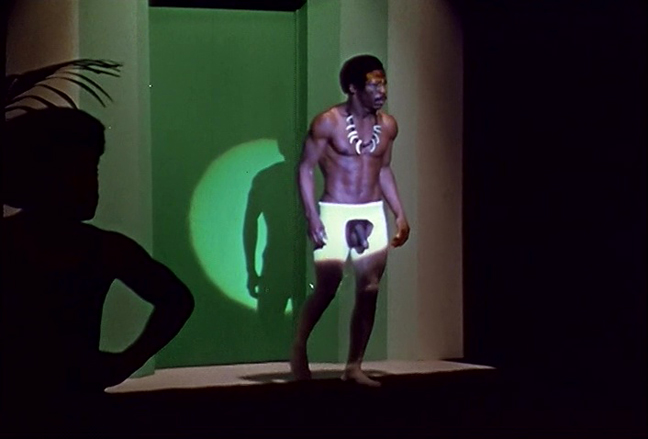 Johnnie Keyes emerges from ‘Behind The Green Door’
Johnnie Keyes emerges from ‘Behind The Green Door’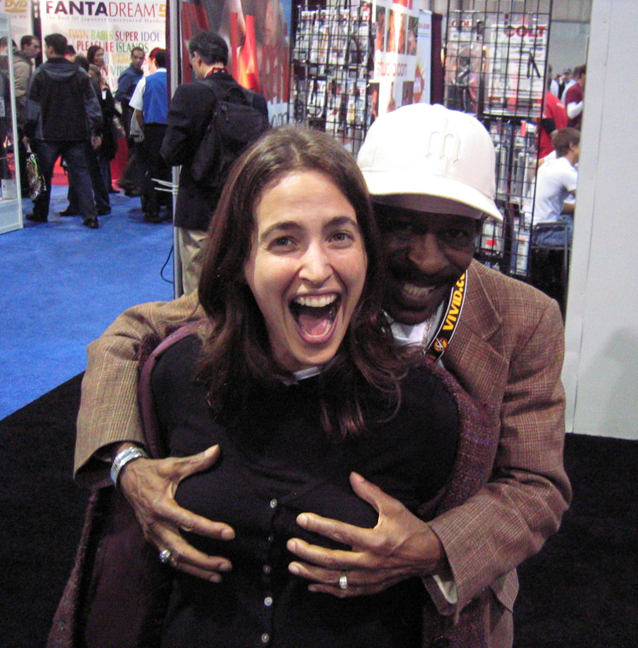 Johnnie Keyes, with The Rialto Report’s April Hall
Johnnie Keyes, with The Rialto Report’s April Hall